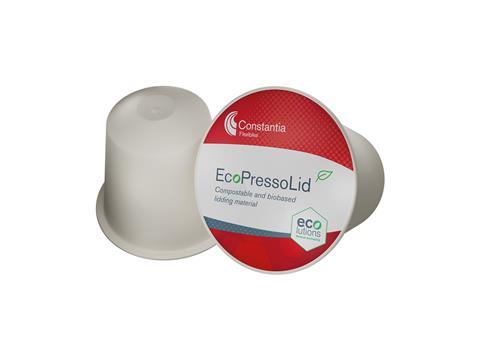
Greiner Packaging and Constantia Flexibles have partnered to introduce a new home compostable coffee capsule, as certified by TÜV Austria.
In this collaboration, Greiner Packaging supplies the body of the capsule, while Constantia Flexibles provides the lid – EcoPressoLid. The capsule body aims to preserve the freshness of the coffee and is reportedly compatible with conventional coffee capsule machines.
Meanwhile, the companies say that the capsule’s lidding offers a high barrier to oxygen, “excellent sealing for compostable coffee capsules, and exceptional coffee brewing performance”. Furthermore, it is reportedly compatible with commonly used capsule filling and sealing machines on the market.
The EcoPressoLid is paper-based, and can be used to seal both the top and bottom of the capsules. Both the capsule body and lid have received the “OK Compost Home” certification from TÜV Austria together as a system.
“We are committed to pushing the boundaries of sustainable packaging solutions. Our collaboration with Constantia Flexibles on the home compostable coffee capsule embodies our shared vision for a greener future.
“This innovative product not only meets the high expectations of eco-conscious consumers but also sets a new standard in the industry. We are proud to contribute to a solution that balances convenience and environmental responsibility”, says Taner Ertan, Global Business Development Manager at Greiner Packaging.
Peter Wallach, SVP Head of Business Segment Processed Meat & Beverages at Constantia Flexibles, adds: “The EcoPressoLid capsule liner is a significant step towards more sustainable coffee consumption. We are especially proud of our partnership with Greiner Packaging, as it allows us to offer a complete, TÜV Austria certified solution to our customers.”
If you liked this story, you might also enjoy:
How are the top brands progressing on packaging sustainability?
Sustainable Innovation Report 2024: Current trends and future priorities
Reuse vs. single use – which is better for the environment?
The ultimate guide to global plastic sustainability regulation





















No comments yet